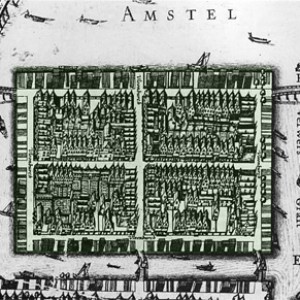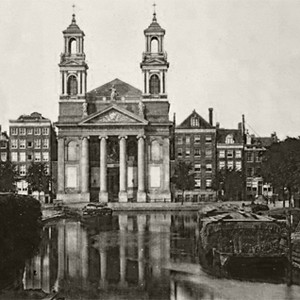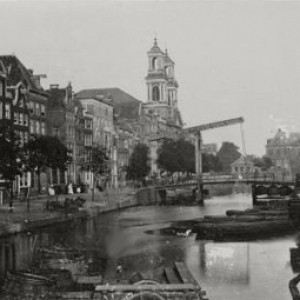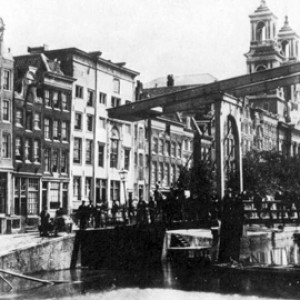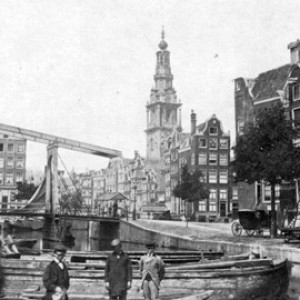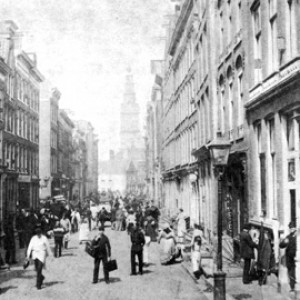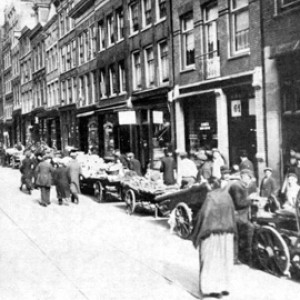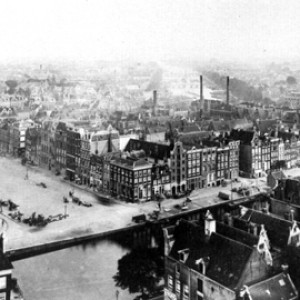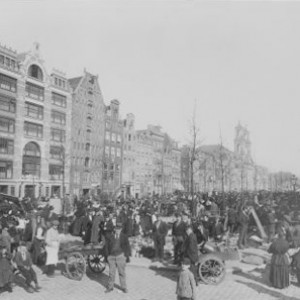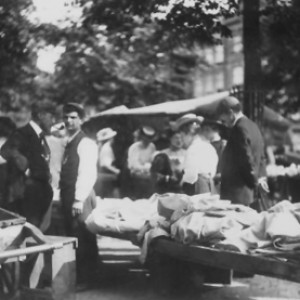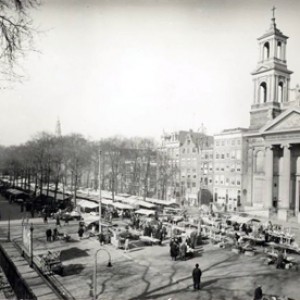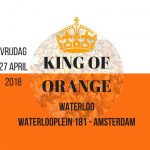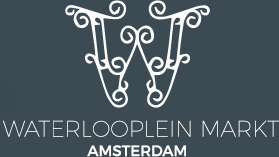Waterloo Square in Amsterdam standards is not old. Yet it is in the middle of a neighborhood whose history dates back to medieval times, but from Waterloo was still lacking. That name was officially adopted only on 16th December 1883. The decree of that day does not specify the reasons for that decision were the basis, but it is likely that the city by naming it wanted to bring a little bit late homage to the heroes of the battlefield, where Napoleon the final blow came. The question is obvious what it was before it became Waterloo Waterloo. The answer is as Amsterdam as it can be:. Water
In less formal terms, the square is of course very old.
Vlooyenburg or Vloonburg was called the land that lay outside the original medieval and walled town, on the north bank of the Amstel, which is still there bends to the west with a playful turn and once via Rokin and Damrak his way to the IJ continued. The fleas that name have nothing to do with the annoying insects from then and now and even less with the flea market which came later, a name by the way, which Amsterdammers will hardly use. Vlooyenburg was constantly inundated by the water of the river Amstel. Vlooyen just flow, otherwise not. That flow would end in 1593 when it was decided to expand the medieval city. The hitherto undeveloped section of land was a neat square island, surrounded by the Amstel, the Acquirers Graft now Zwanenburgwal Houtgracht and Leprozengracht
The square was created when the Leprozengracht and Houtgracht were filled in 1882. The picture shows the situation in 1880. The canal in the foreground is the Leprozengracht. The canal running from left to pass the church is the Houtgracht.
- Vlooyenburgh in de 17de eeuw
- Leprozengracht op de achtergrond de Mozes en Aäronkerk
- Houtgracht met op de achtergrond de Mozes en Aäronkerk.
- Houtgracht op de achtergrond de Mozes en Aäronkerk
- De Houtgracht bij de Zwanenburgwal richting Zuiderkerkstoren
The emotion was very lively when the then Directors decided that the predominantly Jewish merchants in the area (Jodenbreestraat) ply their trade, but had to stand at Waterloo.
- Jodenbreestraat
- Jodenbreestraat gezien naar de Zuiderkerkstoren
The Waterloo-market has a daily market in 1893, six days a week, Saturdays closed course.
This Waterloo flourished as a market where really everything was for sale.
The real Jewish Waterloo market with the Holocaust is gone for good in 1941.
The market has recovered after the war, but has never been the same.

